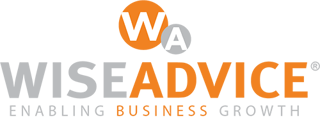It's essential to forecast and monitor your business’s cash flow. By utilising a cash flow forecast you’ll be able to plan ahead for the good times and the bad.
If you’re aware of an upcoming period when your business will hit a slow patch, you’ll be able to plan ahead to arrange timely finance. Likewise, by knowing when you’ll have a period of strong cash flow, you can plan to expand.
Free Download: Cash flow forecast template
Tips for completing your cash flow forecast template
Use accurate figures
Try to be as accurate as possible with your figures. It's worth putting some time and careful thought into getting these figures right as this forecast is usually the focus for banks and anyone reviewing your business financials.
At the bottom of the template, make detailed notes on the assumptions you've made in your forecast.
Rely on solid research to estimate sales
Use solid market research as well as your sales history to calculate accurate sales projections. If you haven’t started your business yet, thoroughly research your target market to assess realistic, future levels of sales.
You should also consider peak seasonal periods – cash flow usually isn’t consistent all year round.
Estimate costs
Once you’ve estimated your sales for each month, you’ll be able to estimate your costs.
Again, you’ll need to explain in detail how you calculated these amounts. Make sure your own salary is realistic. Can you cover your personal living costs, or will you be draining too much out of your business too soon?
Check your capacity
If you estimate your cash flow for a month to be $50,000, consider how feasible this number really is. There are only so many hours in the day and you’ll only be able to deal with a certain number of customers.
Remember that even if you invoice $50,000 of sales in a month, you can’t guarantee the full amount will be paid on time. For example, you might estimate that:
-
80% of invoices are paid in the month of billing.
-
10% are paid a month later.
-
10% are paid two months later.
Look for benchmarks
Find benchmarks for profit in your industry. If yours are notably different from the average, people assessing your business will want to know why.
Involve your accountant
It’s always a good idea to run your figures past your accountant before presenting your cash flow forecast to outside readers – such as potential lenders or investors.
Don't forget one-off items like accounting fees and your tax obligations. Many businesses struggle to find the cash to pay taxes when they’re due. Your accountant can help you estimate what your tax obligations are likely to be.
Make sure your own salary is realistic too – it's a balance between paying yourself too much and not paying yourself enough to meet your expenses. Consider your personal living expenses as well.
If you have any questions, please feel free to book a meeting with our expert below.
